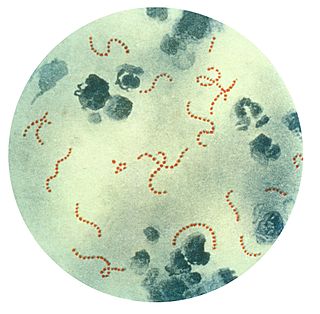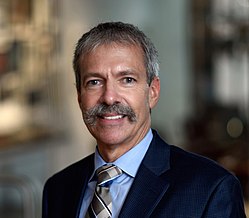Psychosurgery, also called neurosurgery for mental disorder (NMD), is the neurosurgical treatment of mental disorder. Psychosurgery has always been a controversial medical field. The modern history of psychosurgery begins in the 1880s under the Swiss psychiatrist Gottlieb Burckhardt. The first significant foray into psychosurgery in the 20th century was conducted by the Portuguese neurologist Egas Moniz who during the mid-1930s developed the operation known as leucotomy. The practice was enthusiastically taken up in the United States by the neuropsychiatrist Walter Freeman and the neurosurgeon James W. Watts who devised what became the standard prefrontal procedure and named their operative technique lobotomy, although the operation was called leucotomy in the United Kingdom. In spite of the award of the Nobel prize to Moniz in 1949, the use of psychosurgery declined during the 1950s. By the 1970s the standard Freeman-Watts type of operation was very rare, but other forms of psychosurgery, although used on a much smaller scale, survived. Some countries have abandoned psychosurgery altogether; in others, for example the US and the UK, it is only used in a few centres on small numbers of people with depression or obsessive-compulsive disorder (OCD). In some countries it is also used in the treatment of schizophrenia and other disorders.

Obsessive–compulsive personality disorder (OCPD) is a cluster C personality disorder marked by a spectrum of obsessions with rules, lists, schedules, and order, among other things. Symptoms are usually present by the time a person reaches adulthood, and are visible in a variety of situations. The cause of OCPD is thought to involve a combination of genetic and environmental factors, namely problems with attachment.
Scrupulosity is the pathological guilt/anxiety about moral or religious issues. Although it can affect nonreligious people, it is usually related to religious beliefs. It is personally distressing, dysfunctional, and often accompanied by significant impairment in social functioning. It is typically conceptualized as a moral or religious form of obsessive–compulsive disorder (OCD), The term is derived from the Latin scrupus, a sharp stone, implying a stabbing pain on the conscience. Scrupulosity was formerly called scruples in religious contexts, but the word scruple now commonly refers to a troubling of the conscience rather than to the disorder.

Clomipramine, sold under the brand name Anafranil among others, is a tricyclic antidepressant (TCA). It is used for the treatment of obsessive–compulsive disorder, panic disorder, major depressive disorder, and chronic pain. It may increase the risk of suicide in those under the age of 25. It is primarily taken by mouth. It has also been used to treat premature ejaculation.

Pediatric autoimmune neuropsychiatric disorders associated with streptococcal infections (PANDAS) is a controversial hypothetical diagnosis for a subset of children with rapid onset of obsessive-compulsive disorder (OCD) or tic disorders. Symptoms are proposed to be caused by group A streptococcal (GAS), and more specifically, group A beta-hemolytic streptococcal (GABHS) infections. OCD and tic disorders are hypothesized to arise in a subset of children as a result of a post-streptococcal autoimmune process. The proposed link between infection and these disorders is that an autoimmune reaction to infection produces antibodies that interfere with basal ganglia function, causing symptom exacerbations, and this autoimmune response results in a broad range of neuropsychiatric symptoms.
The Yale–Brown Obsessive–Compulsive Scale (Y-BOCS) is a test to rate the severity of obsessive–compulsive disorder (OCD) symptoms.

Compulsive behavior is defined as performing an action persistently and repetitively. Compulsive behaviors could be an attempt to make obsessions go away. The act is usually a small, restricted and repetitive behavior, yet not disturbing in a pathological way. Compulsive behaviors are a need to reduce apprehension caused by internal feelings a person wants to abstain from or control. A major cause of compulsive behavior is said to be obsessive–compulsive disorder (OCD). "The main idea of compulsive behavior is that the likely excessive activity is not connected to the purpose to which it appears directed." There are many different types of compulsive behaviors including shopping, hoarding, eating, gambling, trichotillomania and picking skin, itching, checking, counting, washing, sex, and more. Also, there are cultural examples of compulsive behavior.

Obsessive–compulsive disorder (OCD) is a mental and behavioral disorder in which an individual has intrusive thoughts and feels the need to perform certain routines (compulsions) repeatedly to relieve the distress caused by the obsession, to the extent where it impairs general function.
Susan Swedo is a researcher in the field of pediatrics and neuropsychiatry. Beginning in 1998, she was Chief of the Pediatrics & Developmental Neuroscience Branch at the US National Institute of Mental Health. In 1994, Swedo was lead author on a paper describing pediatric autoimmune neuropsychiatric disorders associated with streptococcal infections (PANDAS), a controversial hypothesis proposing a link between Group A streptococcal infection in children and some rapid-onset cases of obsessive-compulsive disorder (OCD) or tic disorders such as Tourette syndrome. Swedo retired from the NIH in 2019, and serves on the PANDAS Physician Network.
The cause of obsessive–compulsive disorder is understood mainly through identifying biological risk factors that lead to obsessive–compulsive disorder (OCD) symptomology. The leading hypotheses propose the involvement of the orbitofrontal cortex, basal ganglia, and/or the limbic system, with discoveries being made in the fields of neuroanatomy, neurochemistry, neuroimmunology, neurogenetics, and neuroethology.
In psychology, relationship obsessive–compulsive disorder (ROCD) is a form of obsessive–compulsive disorder focusing on close or intimate relationships. Such obsessions can become extremely distressing and debilitating, having negative impacts on relationships functioning.
The delayed-maturation theory of obsessive–compulsive disorder suggests that obsessive–compulsive disorder (OCD) can be caused by delayed maturation of the frontal striatal circuitry or parts of the brain that make up the frontal cortex, striatum, or integrating circuits. Some researchers suspect that variations in the volume of specific brain structures can be observed in children that have OCD. It has not been determined if delayed-maturation of this frontal circuitry contributes to the development of OCD or if OCD is the ailment that inhibits normal growth of structures in the frontal striatal, frontal cortex, or striatum. However, the use of neuroimaging has equipped researchers with evidence of some brain structures that are consistently less adequate and less matured in patients diagnosed with OCD in comparison to brains without OCD. More specifically, structures such as the caudate nucleus, volumes of gray matter, white matter, and the cingulate have been identified as being less developed in people with OCD in comparison to individuals that do not have OCD. However, the cortex volume of the operculum (brain) is larger and OCD patients are also reported to have larger temporal lobe volumes; which has been identified in some women patients with OCD. Further research is needed to determine the effect of these structural size differences on the onset and degree of OCD and the maturation of specific brain structures.
The University of Florida Obsessive–Compulsive Disorder Program is a treatment and research clinic in the Department of Psychiatry at the University of Florida. The clinic is located in Gainesville, Florida.

David S. Shannahoff-Khalsa is a researcher in mind-body dynamics. He has published widely in scientific journals and regularly presents full day courses at the American Psychiatric Association and other national and international conferences. Shannahoff-Khalsa has also published three books outlining his years of experience using Kundalini Yoga meditation as taught by Yogi Bhajan to understand and treat psychiatric disorders.
Gary Roy Geffken, Ph.D., is a clinical psychologist from Gainesville, Florida. As director of the University of Florida Obsessive Compulsive Disorder Program, Geffken participates in clinical activity and research. Geffken's primary research interests include Obsessive Compulsive Disorder and Type 1 Diabetes.

The Yale Global Tic Severity Scale (YGTSS) is a psychological measure designed to assess the severity and frequency of symptoms of disorders such as tic disorder, Tourette syndrome, and obsessive-compulsive disorder, in children and adolescents between ages 6 and 17.

Jonathan Stuart Abramowitz is an American clinical psychologist and Professor in the Department of Psychology and Neuroscience at the University of North Carolina at Chapel Hill (UNC-CH). He is an expert on obsessive-compulsive disorder (OCD) and anxiety disorders whose work is highly cited. He maintains a research lab and serves as the Director of the UNC-CH Anxiety and Stress Disorders Clinic. Abramowitz approaches the understanding and treatment of psychological problems from a cognitive-behavioral perspective.
The Dimensional Obsessive-Compulsive Scale (DOCS) is a 20-item self-report instrument that assesses the severity of Obsessive-Compulsive Disorder (OCD) symptoms along four empirically supported theme-based dimensions: (a) contamination, (b) responsibility for harm and mistakes, (c) incompleteness/symmetry, and (d) unacceptable (taboo) thoughts. The scale was developed in 2010 by a team of experts on OCD led by Jonathan Abramowitz, PhD to improve upon existing OCD measures and advance the assessment and understanding of OCD. The DOCS contains four subscales that have been shown to have good reliability, validity, diagnostic sensitivity, and sensitivity to treatment effects in a variety of settings cross-culturally and in different languages. As such, the DOCS meets the needs of clinicians and researchers who wish to measure current OCD symptoms or assess changes in symptoms over time.
John Piacentini, PhD, ABPP, is an American clinical child and adolescent psychologist, and professor of psychiatry and biobehavioral sciences at the David Geffen School of Medicine at UCLA in Los Angeles, California. He is the director of the Center for Child Anxiety, Resilience, Education and Support (CARES), and the Child OCD, Anxiety and Tic Disorders Program at UCLA's Semel Institute for Neuroscience and Human Behavior.

Judith L. Rapoport is an American psychiatrist. She is the chief of the Child Psychiatry Branch at the National Institute of Mental Health (NIMH), part of the National Institutes of Health (NIH) in Bethesda, Maryland.









